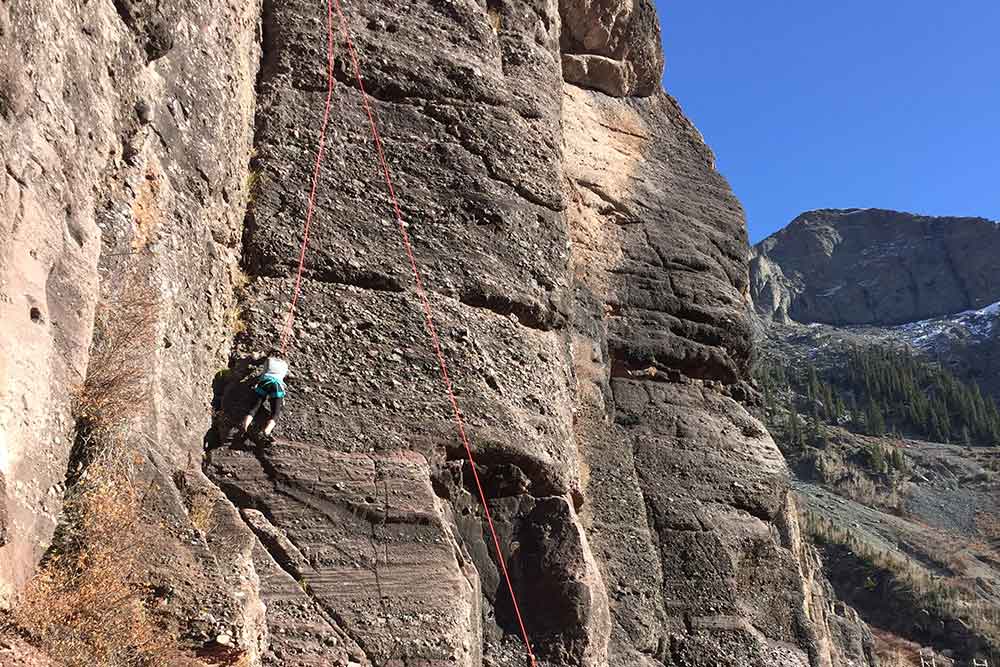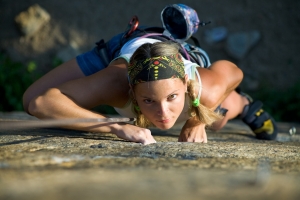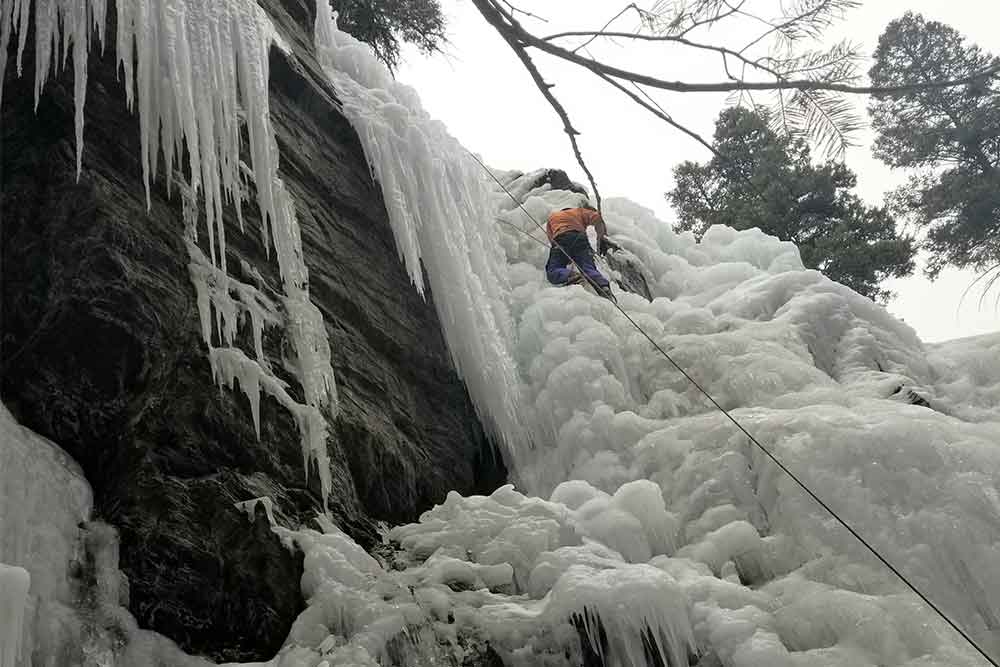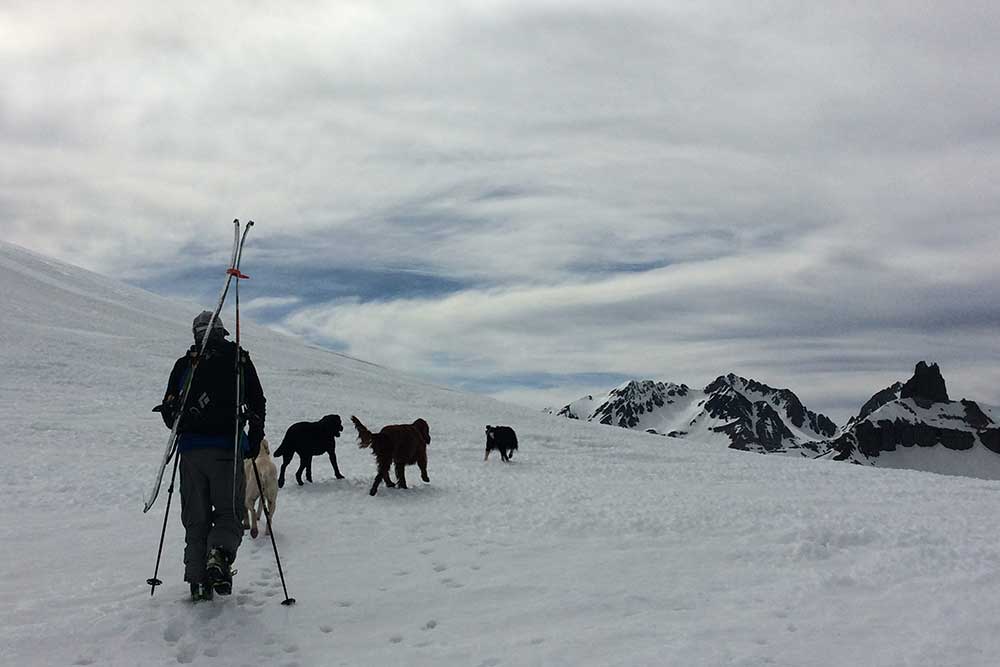Clippin’ bolts – Sport Climbing in Colorado

Hank Shell
The arena of rock climbing in Colorado has long been hotbed of debate and jocular friction, one where seasoned climbers champion their chosen discipline and, at times, spite those others that don’t meet their ideal vision of the sport.
This schism can be especially stark between traditional climbing purists and hard-charging sport climbers.
I covered the basics of traditional climbing, where one place’s their own protection on a route, in a previous article on Indian Creek, Utah. Sport climbing is a more recent (and popular) development in rock climbing. It involves relying on pre-drilled bolts or other extant protection on a rock face to protect an ascent. While traditional climbers may pooh-pooh at sport climbing as a industrialized and coddled way to climb, primarily because it has a lower entry barrier of both knowledge and mental fortitude, sport climbing has done much to democratize climbing and usher it from the fringe to the mainstream of sport.
Related Article: “Creekin” – An Intro to Crack Climbing
When you compare the fixed costs of sport climbing to those of trad climbing, sport is bafflingly cheaper.
A single camming device can cost between $50 and $150, while a quickdraw – two carabiners connected by a short “dog bone” and used to clip into a bolt – are generally less than $20 a pop.
You can also forego much of the technical knowhow required to safely make a traditional ascent, though it’s always good to have a sound understanding of rope systems.
In short, sport climbing is cheaper and simpler, though by no means easier. The hardest grades in roped climbing are on sport routes, as the simple task of clipping a bolt frees climbers up to attempt more strenuous sequences.
For the beginning climber, sport is generally the place to start.
As a recent transplant to Telluride, Colo., I was excited to learn that there were quite a few sport and trad routes nestled in the canyon above town.
My roommates Tyler and Hannah were amenable to an exploratory climbing session high in the canyon last Saturday. It was Hannah’s first time on ropes, so sport climbing was the ideal choice.
The Pipeline Wall
We piled into Hannah’s jeep and headed to the KOTO Ski Swap in Telluride for a couple hours before continuing through town toward the now defunct Idarado Mine.
You don’t really get a true sense of the expansiveness of the canyon in which Telluride sits until you slip past the bustling storefronts of Colorado Avenue and into view of Bridal Veil Falls, a 365-foot cascade that falls like a silver brushstroke down the back of the canyon.
Once past the old mine, we began to climb up a switch-backing dirt road to the terminus of an old mine cart path. From there, we left the car and hiked along the rusted rail line, past the dark, gaping mouth of an old mine shaft, to the base of the Pipeline Wall.
The stone is typical Telluride conglomerate; it looks like concrete pocked with cobble and gravel. The climbing is physical but fun with an infinite range of possible moves and sequences to ascend a route.
The rock can also be somewhat unstable. The clamor of rock fall repeatedly rolled across the canyon like summer thunder during our afternoon at the wall. While it’s always a good idea to wear a helmet when doing any sort of roped climbing, it’s especially prudent while climbing in the Telluride area.
Sport climbing basics
The rotation of sport climbing with a partner generally goes like this – one climber leads the route, placing quickdraws in each bolt and running the rope through the opposite end of the draw before building a safe anchor in the two anchor bolts, which are found at the top of almost all sport routes.
The rope is then pulled from the lead climber’s end until the follower can tie into the tail. In this manner, the follower then climbs up to each quickdraw before detaching it and clipping it to their harness. In this way they “clean” the route, recovering all the quickdraws before reaching the anchor, which they also clean. After the route is clean, the leader can lower the follower, or the follower can rappel from the anchors. A rappel is preferable if there’s a potential for significant abrasion of the rope by the rock while lowering.
With three climbers, we completed the above sequence with the exception of cleaning the anchor on the second ascent of each climb. Leaving the anchor in tact, the third climber could then “top-rope” the climb before cleaning the anchor.
Related Article: Beat Back the Fall Doldrums with Bouldering
Getting started
Understand that this is really a cursory review of sport climbing.
It’s important to practice any type of climbing with an experienced climber. Many modern climbing gyms offer sport routes where climbers can brush up on their skills, either leading or “mock-leading,” which means clipping bolts while safely belayed on top-rope.
Mountainproject.com is a great place to find local climbers willing to clip a few bolts with you. Still, make sure you understand the basics of belaying before heading outside for the first time. Again, a local climbing gym is probably the best place for most people to learn this skill.
If you find yourself in beautiful San Miguel County, Colorado and feel like climbing in the Telluride area, local climbing guidebooks are available for free online at Telluridemountainclub.com. The accessibility of sport climbing to the novice is unparalleled, and learning a few basic skills can lead to a lifetime of outdoor enjoyment. So what are you waiting for? Get after it!
You Might Like:

















